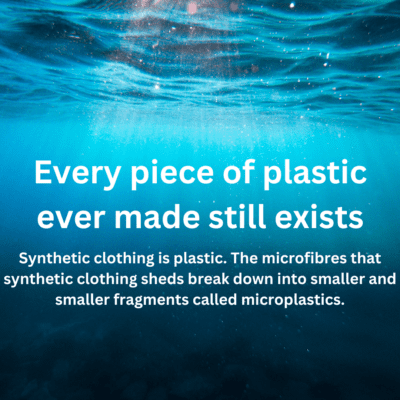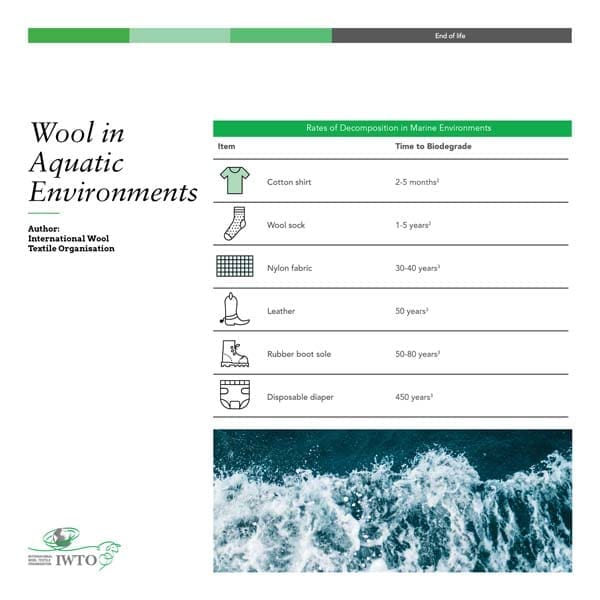Microplastic pollution is one of the biggest and most urgent issues facing the global textile industry.
“All synthetic clothing and materials, sooner or later, will become microplastics, a “time-delayed” pollution bomb. … The problem with synthetic fibres is that they will never biodegrade, but just keep breaking down into smaller and smaller pieces. Every piece of plastic ever made is still in existence.” – From Science Norway

What are microplastics and microfibres?
A microfibre can be either natural or synthetic.
If it’s synthetic, the microfibre breaks down into smaller and smaller fragments, and is called microplastic when it measures 5mm (about 3/16 of an inch) or less.
How are textile microfibres released?
Scientific studies have shown that a typical 5 kg wash load of polyester fabrics can release as many as 6 million microplastic fibres.
What makes wool different?
Wool garments also shed fibres during wear and care, but with a crucial difference: wool fibres biodegrade.
Wool is made of keratin, a protein – the same as human hair. Wool is not plastic, and thus does not break down into ever increasing plastic particles. Wool in the ground or in water will biodegrade, consumed by fungus and other microorganisms.
The research is absolutely clear that wool biodegrades safely. It does so at different rates in soil and water, and depending on the environmental conditions. IWTO has an ongoing programme of work that is evaluating information on the loss of natural fibres in the environment, the rate at which they biodegrade, and the potential for impacts or concern. Read about the early results of this research: Study Confirms Wool Fibres Readily Biodegrade in Marine Environments
How wool can help
Wool’s natural properties support less frequent, lower impact washing. Wool garments tend to last longer, and are kept for longer, than their synthetic counterparts. Finally, wool is part of the natural life cycle of the planet. Even when natural fibres (like wool) are found in water systems, the issue is not about their presence. The question that must be asked is, what happens to these fibres? Do they biodegrade? Or do they persist?
Wearing clothing made from wool and other natural fibres means less synthetic fibres are released into the world.
Learn more with IWTO’s Fact Sheet on Wool in Aquatic Environments


